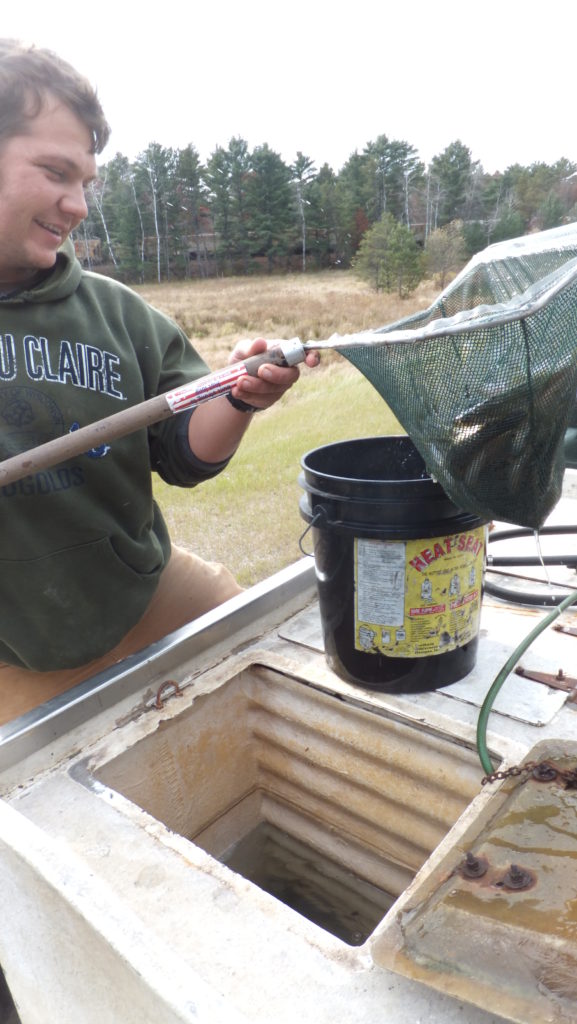Twenty years ago when we dug our first pond, we were told it was just impossible to raise walleyes in small ponds. Today it is a completely different story!

Walleyes about to be stocked in a pond by an employee of Central Wisconsin Fish Farms
Significant knowledge and sources of information for raising walleyes in northern ponds is readily available. There are now a number of fish farms businesses raising walleyes for stocking both public and private waters.
You can raise walleyes in your pond at home, but there are some basic things that you will want to know to reach success.
Walleyes are not as aggressive as small-mouth bass or large-mouth bass at catching their food. My experience with small-mouth bass is that they chase minnows right onto the shore and even drag mourning doves into the water – no they can’t swallow them. Removing aggressive fish may be necessary to raise quality walleyes. Fish compatible with walleyes may be fathead minnows, perch and hybrid bluegills. Hybrid bluegills are sterile and so they don’t reproduce and over-populate the pond.
Walleyes need forage fish like minnows or young perch.

Aeration equipment being prepared for installation on a small private lake that is being stocked with fish.
Larval (small fish) feed on zoo-plankton (tiny microscopic animals). Zoo-plankton in turn eat algae. Placing pesticides or dyes in your pond to improve water quality will damage the food sources for all your fish. And who wants to eat walleyes that are tainted with pesticides?
Aeration is important for walleyes and other organisms. Most small ponds need aeration during the winter so the oxygen levels are not depleted. During warm months, aeration mixes the water in the pond to create a chemically and physically homogenized environment.

Small equipment can be used to create swales that keep run-off water from directly entering the pond that contains excessive nutrients and organic material.
Aeration is a good way to improve water quality while providing for the health of your fish.
Many authorities assert that walleyes will not breed in small ponds. In reality some reproduction may occur, but not enough to replace fish that are caught, die or are eaten by predators. To improve breeding success rock substrate can be added to ponds. Additionally, water circulators can be added to your pond to simulate water current that walleyes prefer for breeding sites.
A properly constructed and managed pond on your property can be a real asset. You can create a pond that hosts a variety of species of animals and fish, is fun to use and can provide fulfilling entertainment for all age groups. Remember, a pond with fish and a healthy ecosystem is just another way that you can enjoy a meal close to home and you grew it yourself!
About the Author: Tom Girolamo is an author and owner of Eco-Building & Forestry, LLC. He provides international sales and sustainable development as a distributor for Kasco Marine Inc. Kasco Marine is a Wisconsin manufacturer of fountains and aeration equipment for ponds and lakes.
